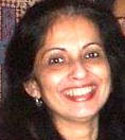Where is the Beauty of Islam?

By Rabia Ahmed
April 15, 2015
Children’s author, Beverly Cleary, worked as a librarian for the US Army during the Second World War. In her autobiography, ‘My Own Two Feet,’ she wrote of an incident which made an impression on her during that time period:
“An army chaplain requested a book on flower arranging, a subject I had not expected to interest the army. I bought the most beautiful book I could find, and when I handed it to him, he remarked, ‘We teach little children to worship in beauty and then send them to Sunday school in church basements’.”
Aside from agreeing with the chaplain, the incident resonated with me.
In the 90s, we lived in the capital of Western Australia, Perth, which had a small Muslim population, enough to warrant a few mosques. Like all immigrants, we tried to keep the children in the cultural loop and went the extra mile to enable this. We kept in touch with the community from our part of the world, in addition to our Australian friends.
In that respect, we were unlike the better part of the Pakistani community, out of which one of them once told me proudly and a bit accusingly,
“Allah ke fazal se humaray ghar aaj tak na koi kafir aya hai na hum kisi kafir kay ghar gayay hain,”
(Thank God that till date, no unbeliever has ever come to our house and neither have we ever visited the house of an unbeliever.)
Words that are a subject for a blog in itself.
On Eid, we used to go to the mosque as a family, something that women rarely do in Pakistan, but then, immigrants are always more Catholic than the Pope. You can find the Muslim equivalent of that one yourself.
The Perth mosque was built in the early years of the 20th century by Fateh Muhammad Deen, who migrated to Australia from Punjab. Not having been to Perth in over a decade, I am not aware of what the Perth mosque is like now, but at that time, it was housed in a small building in the town’s centre, bang across the street from a building with an interesting neon rooftop sign which read,
“Girls! Girls! Girls”
When we first visited the Perth mosque, its walls were being raised to shut out the sign, creating a little microcosm of a courtyard, and an L-shaped building consisting of a prayer room, with the Imam’s quarters in the basement.
On Eid – clothed in our best attire, shepherding a pair of unwilling children – we would arrive at the mosque where we would split up; dad to the main prayer hall, mum and the kids to the imam’s quarters in the basement. There, safely segregated from the men, the women prayed, kept an eye on the children, and tried to catch the khutba (sermon), trying to reconcile its content with their surroundings.
It was a small room at that time, full but not overflowing. A charpoy (bed) leant against the wall with the imam’s clothes draped over it as well as on a couple of chairs that stood in the corner. Not having seen the main prayer hall I cannot say how it was compared to our prayer room, but I was told the hall was ‘okay,’ which this room was definitely not.
In a culture obsessed with gender and sexual innuendo, I think it is rather inappropriate to be expected to concentrate on prayer with the imam’s shalwar’s colourful nara hanging discreetly in the background, what do you think? Surely a lock of woman’s hair is no more provocative than that flamboyant item of clothing?
It was a hot day, and in the absence of air conditioning, the slight breeze from a little window in the wall beside me was extremely welcomed. Yet, on more than one occasion, a lady from the congregation, shrouded in an Abaya and Hijab, walked over from across the room to shut it. Compelled into defiance by the heat, I reached out each time to re-open it. Glaring at each other as we left, I vowed to find another mosque the following Eid, and we did – the Turkish mosque.
Not as centrally located as the Perth Mosque, the Turkish mosque was more pleasant, with two large prayer rooms, the one in the front for the men and a smaller one at the back for women, divided from the men’s room by folding doors. This room would have been pleasant enough if it were not for the pungent odour from the toilets just outside its door. Naturally, since it was the women who kept the children with them, the toilets must never be far away.
The chaplain’s words come back to me as equally applicable to the Muslim world as we witnessed in Perth at the time, and almost everywhere else since. There is a dichotomy between teachings and practice in our lives. The Quran contains some breathtakingly beautiful verses and yet we concentrate so utterly on its forbidding aspect and teach only about Zina (adultery) and Kufr (faithlessness), and its related punishments.
Why can we not teach our children by hands-on methods illustrated by these verses, about the miracle of the honey bee and the honey it makes, the clouds and the rain, and the way the night follows day in a spherical and not flat world (Surah Az- Zumar, verse 5)?
Islam is a beautiful religion, and its scripture contains some of the most sublime passages. But although we are told repeatedly what a beautiful religion Islam is, where is this beauty reflected in our surroundings or in the words of Islamic teachers today?
Rabia Ahmed is a freelance writer and translator.
Source: http://blogs.tribune.com.pk/story/27166/where-is-the-beauty-of-islam/




 Moderate Islamist here
Moderate Islamist here


0 comments:
Post a Comment